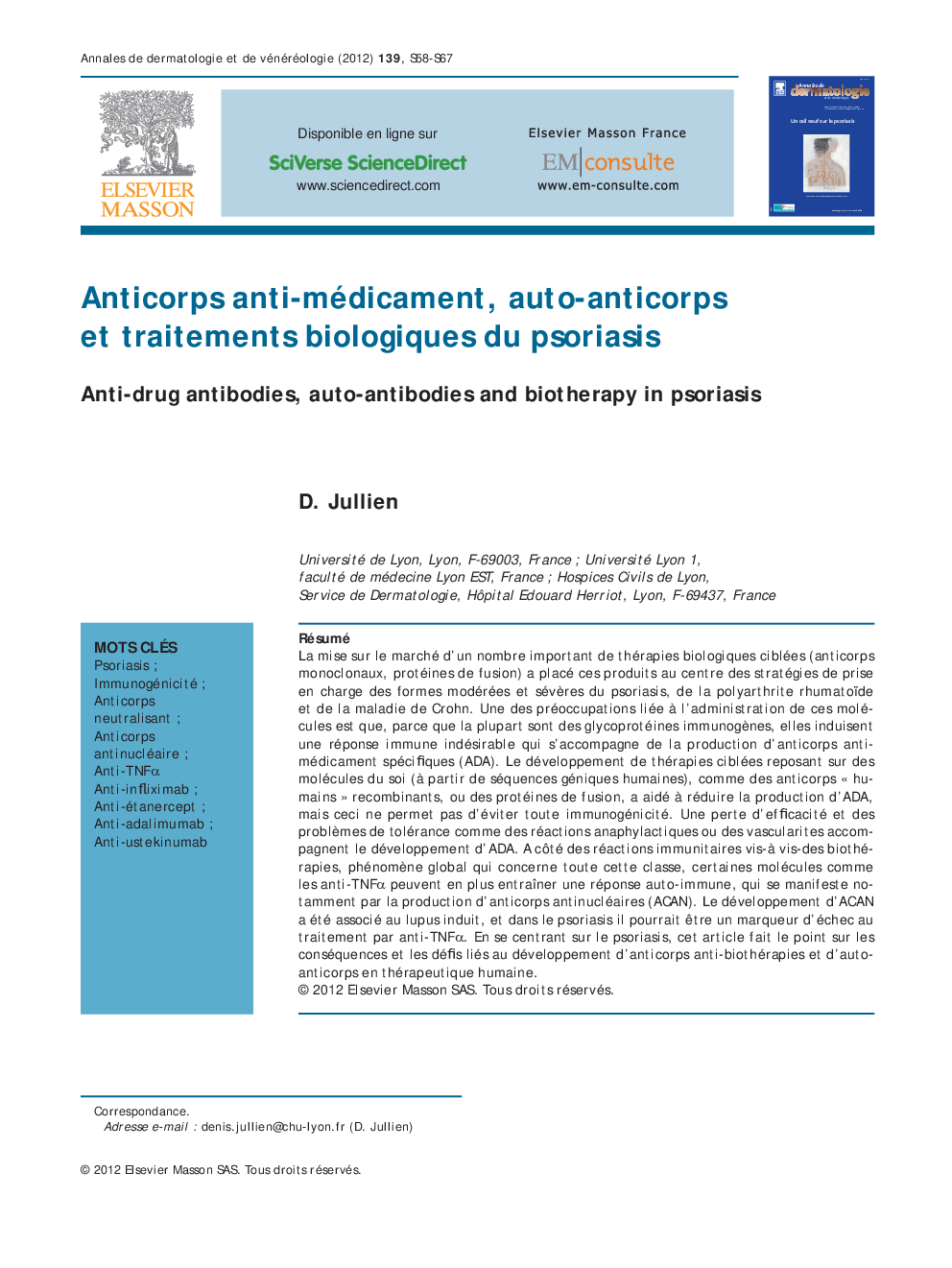| کد مقاله | کد نشریه | سال انتشار | مقاله انگلیسی | نسخه تمام متن |
|---|---|---|---|---|
| 3187687 | 1200937 | 2012 | 10 صفحه PDF | دانلود رایگان |
عنوان انگلیسی مقاله ISI
Anticorps anti-médicament, auto-anticorps et traitements biologiques du psoriasis
دانلود مقاله + سفارش ترجمه
دانلود مقاله ISI انگلیسی
رایگان برای ایرانیان
کلمات کلیدی
موضوعات مرتبط
علوم پزشکی و سلامت
پزشکی و دندانپزشکی
امراض پوستی
پیش نمایش صفحه اول مقاله

چکیده انگلیسی
The approval of substantial numbers of targeted biologic therapies (e.g., monoclonal antibodies, fusion proteins) for treatment of inflammatory diseases has positioned these drugs as important to fight chronic disorders such as psoriasis, rheumatoid arthritis and Crohn's disease. One of the concerns raised with the administration of biologic therapies is that because most of them are immunogenic glycoproteins they induce undesirable immune response leading to the generation of specific anti-drug antibodies (ADA). The development of “self” derived protein therapeutics (comprised of human germline sequence), such as recombinant “human” antibodies, helped to reduce the production of ADA but did not avoid all immunogenicity. Reduced efficacy and safety issues such as anaphylaxis or vasculitis accompany the development of ADA. In addition to immune reactions directed against the biologic therapies as a whole, some of them such as anti-TNFα are able to induce auto-immune response, notably antinuclear antibody (ANA). ANA development was associated with induced lupus and in psoriasis it was suggested that it may act as a marker of treatment failure to anti-TNFα. With a focus on psoriasis, this paper makes a current point on the consequences and challenges of the development of anti-drug antibodies and auto-immunity in patients who receive biologic therapies.
ناشر
Database: Elsevier - ScienceDirect (ساینس دایرکت)
Journal: Annales de Dermatologie et de Vénéréologie - Volume 139, Supplement 2, April 2012, Pages S58-S67
Journal: Annales de Dermatologie et de Vénéréologie - Volume 139, Supplement 2, April 2012, Pages S58-S67
نویسندگان
D. Jullien,